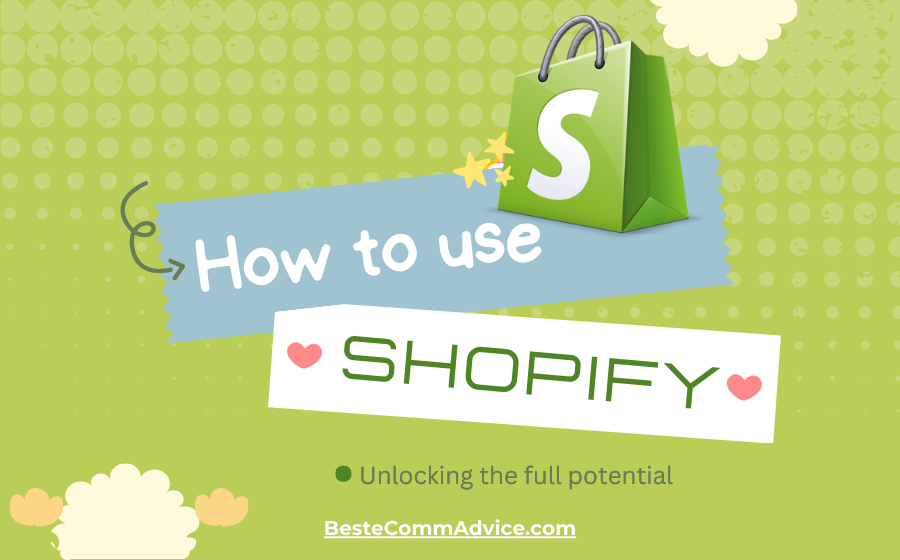
How to use Shopify?
20 March 2024Mastering Shopify: A Comprehensive Guide for Beginners
In today’s digital age, establishing an online presence is essential for businesses of all sizes. Shopify, a leading e-commerce platform, offers entrepreneurs a user-friendly solution to create, manage, and grow their online stores. Whether you’re a seasoned business owner or a budding entrepreneur, harnessing the power of Shopify can unlock countless opportunities. In this detailed guide, we’ll walk you through the process of using Shopify, from setting up your store to optimizing its performance for success.
Getting Started: Setting Up Your Shopify Account
a. Sign Up: Visit the Shopify website and sign up for an account. You can start with a free trial to explore the platform’s features and functionalities before committing to a subscription plan.
b. Customize Your Store: Choose a unique domain name for your store and select a Shopify theme that aligns with your brand identity. Customize your store’s design, layout, and navigation to create a visually appealing and seamless shopping experience for your customers.
c. Add Products: Populate your store with products by adding product listings, including images, descriptions, pricing, and variants (e.g., sizes, colors). Organize your products into categories or collections to make navigation easier for customers.
d. Set Up Payment Gateways: Configure payment gateways to accept payments from customers. Shopify Payments is the default option, but you can also integrate third-party payment gateways like PayPal, Stripe, or Amazon Pay to offer additional payment options.
e. Configure Shipping Settings: Set up shipping rates and options for your products. Specify shipping zones, rates, and fulfillment methods (e.g., dropshipping, in-house fulfillment) to provide accurate shipping estimates to customers.
Managing Your Store: Essential Tools and Features
a. Dashboard: Familiarize yourself with the Shopify dashboard, which serves as the central hub for managing your store. From the dashboard, you can access various features and tools to monitor sales, track inventory, and analyze performance.
b. Orders: Monitor incoming orders and manage order fulfillment efficiently using Shopify’s order management system. Track order status, process payments, and communicate with customers regarding order updates and shipping details.
c. Inventory: Keep track of your inventory levels and stock availability to prevent overselling and stockouts. Set up alerts and notifications for low stock levels and reorder products in a timely manner to ensure uninterrupted sales.
d. Customers: Manage customer accounts, track customer interactions, and analyze customer data to understand their preferences and behavior. Use this insight to personalize marketing campaigns and enhance the overall shopping experience.
Marketing and Promotion: Attracting Customers to Your Store
a. Search Engine Optimization (SEO): Optimize your store’s content, including product descriptions, titles, and meta tags, for search engines to improve visibility and attract organic traffic. Use relevant keywords and phrases related to your products and target audience.
b. Content Marketing: Create engaging and informative content, such as blog posts, guides, and tutorials, to establish your brand as an authority in your niche and drive traffic to your store. Share valuable insights, tips, and product recommendations to engage with your audience.
c. Social Media Marketing: Leverage social media platforms like Facebook, Instagram, Twitter, and Pinterest to promote your products and engage with potential customers. Share visually appealing images and videos, run targeted ads, and interact with your audience to build a loyal following.
d. Email Marketing: Build an email list of subscribers and send regular newsletters, promotions, and product updates to keep customers informed and engaged. Personalize your email campaigns based on customer preferences and behavior to maximize conversions.
Analyzing Performance: Evaluating Your Store’s Success
a. Analytics and Reporting: Utilize Shopify’s built-in analytics tools to track key performance metrics, such as sales, traffic, conversion rates, and customer behavior. Gain insights into your store’s performance and identify areas for improvement to optimize your sales strategies.
b. A/B Testing: Experiment with different marketing tactics, product layouts, pricing strategies, and promotional offers using A/B testing. Compare the performance of variations to determine which strategies yield the best results and iterate accordingly.
c. Customer Feedback: Collect feedback from customers through reviews, surveys, and feedback forms to understand their needs, preferences, and pain points. Use this valuable insight to enhance your products, services, and overall shopping experience to drive customer satisfaction and loyalty.
Scaling Your Business: Expanding Your Reach and Revenue
a. Diversifying Product Offerings: Expand your product catalog by introducing new products, variations, or product lines to appeal to a broader audience and meet evolving customer demands.
b. International Expansion: Explore opportunities to sell to international markets by offering multi-currency pricing, international shipping, and localized content and marketing campaigns to reach a global audience.
c. Collaboration and Partnerships: Forge strategic partnerships with influencers, bloggers, complementary brands, and affiliate marketers to extend your reach and leverage their audience to drive traffic and sales to your store.
d. Continuous Optimization: Continuously optimize your store, marketing strategies, and operations based on data-driven insights and customer feedback. Stay updated on industry trends, best practices, and emerging technologies to stay ahead of the competition and drive sustainable growth.
By following these steps and implementing best practices, you can harness the full potential of Shopify to build a successful and profitable online store. Remember that success in e-commerce requires dedication, persistence, and a willingness to adapt to changing market dynamics. With Shopify as your partner, the possibilities are endless, and your journey towards entrepreneurial success begins now.
.png)